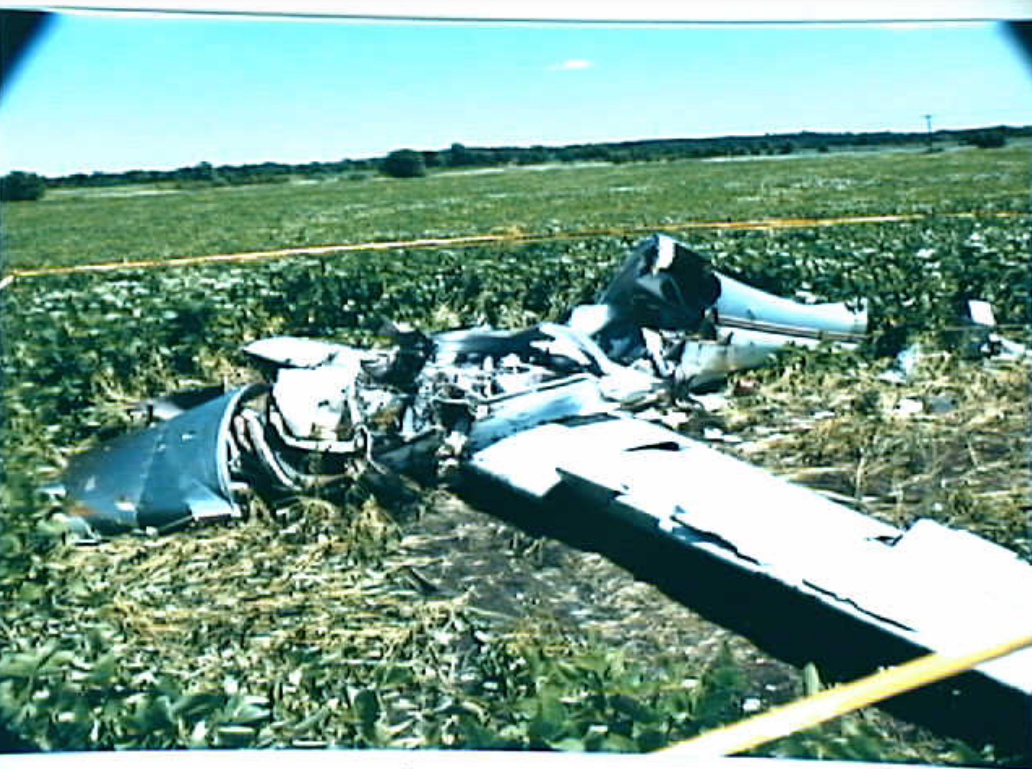
ASN Wikibase Occurrence # 38289
This information is added by users of ASN. Neither ASN nor the Flight Safety Foundation are responsible for the completeness or correctness of this information.
If you feel this information is incomplete or incorrect, you can submit corrected information.
| Date: | Thursday 8 August 1996 |
| Time: | 09:02 |
| Type: |  Lancair 320 |
| Owner/operator: | Lancair International |
| Registration: | N320L |
| MSN: | L 1987 |
| Total airframe hrs: | 1502 hours |
| Engine model: | Lycoming IO-320-B1A |
| Fatalities: | Fatalities: 1 / Occupants: 1 |
| Aircraft damage: | Destroyed |
| Category: | Accident |
| Location: | Fond Du Lac, WI -
 United States of America United States of America
|
| Phase: | En route |
| Nature: | Private |
| Departure airport: | Oshkosh-Wittman Field, WI (OSH) |
| Fond Du Lac County Airport, IL (ARR) | |
| Investigating agency: | NTSB |
| Confidence Rating: |
On August 8, 1996, at 0902 central daylight time (cdt), a Lancair 320, N320L, registered to Neico Aviation, of Redmond, Oregon, piloted by a Commercial rated pilot, departed controlled flight after the propeller came off inflight, and impacted terrain, approximately four miles south of Fond Du Lac County Airport, Fond Du Lac, Wisconsin. The airplane was destroyed and the pilot sustained fatal injuries. The 14 CFR Part 91 flight was not operating on a flight plan. Visual meteorological conditions prevailed at the time of the accident. The flight departed Wittman Regional Airport, Oshkosh, Wisconsin, at 0853 cdt.
The airplane experienced an inflight loss of its propeller assembly. A witness observed the airplane spiraling downward similar to that of a flat spin with smoke coming from it. Examination of the fractured propeller mounting flange revealed a separation of the propeller mounting flange from the remainder of the crankshaft which was the result of fatigue cracking that initiated between the lightening holes in the flange. There is an Airworthiness Directive and Service Bulletin that specifically addressed the subject engine when it is installed on the Piper PA-30 airplane. These inspection requirements arose because of cracking problems generated by bending of the mounting flange under certain aerobatic-type maneuvers, primarily maneuvers that add stresses from gyroscopic action. The weight and balance after the loss of the propeller was 1,531 pounds at 70.09 inches aft. The center of gravity envelope for the N320L is between 60.75 to 66.75 inches aft.
Probable Cause: The fatigue in the propeller flange with soft material and oversized lightening holes. A factor was the pilot's inability to maintain control of the aircraft due to the exceeded weight and balance which led to a stall/spin.
Accident investigation:
 |
|
Sources:
NTSB: http://www.ntsb.gov/ntsb/brief.asp?ev_id=20001208X06424
NTSB safety recommendation A-97-111 was issued.
Images:


Photos: NTSB
Revision history:
| Date/time | Contributor | Updates |
|---|---|---|
| 24-Oct-2008 10:30 | ASN archive | Added |
| 21-Dec-2016 19:23 | ASN Update Bot | Updated [Time, Damage, Category, Investigating agency] |
| 18-Oct-2022 18:41 | Captain Adam | Updated [Departure airport, Destination airport, Narrative, Accident report, Photo] |
| 18-Oct-2022 18:42 | Captain Adam | Updated [Source, Photo] |
Corrections or additions? ... Edit this accident description
The Aviation Safety Network is an exclusive service provided by:


 ©2024 Flight Safety Foundation
©2024 Flight Safety Foundation